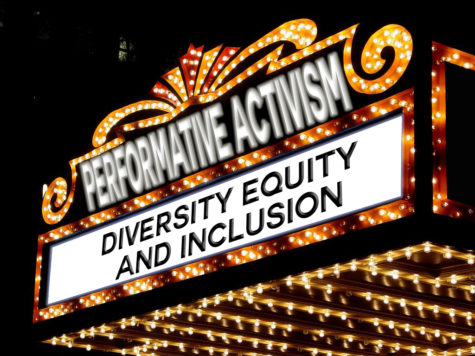OPINION | Performative DEI initiatives are far from productive

Performative change is nothing new. Every March, storefronts take down their Black History Month decorations and put up another series of ads and products. Every July, when Pride month ends, the rainbows and voices of support fade into the background.
Corporate activism is often called out for being a token effort more than a real, substantial change. Even outside of the corporate sphere, trends like Blackout Tuesday or celebrities singing “Imagine” have been decried as insensitive or inconsequential.
Now, great weight is placed on how institutions and groups address the concepts of diversity, equity and inclusion. From government organizations to universities, these three words have been given increased importance. Despite their prevalence, however, some might wonder what these words actually mean. Why is so much importance being placed on these words?
In the performative sense, Diversity, Equity and Inclusion initiatives — sometimes shortened to DEII — are convenient tools to display how committed the organization is to fostering racial equity. These performative initiatives, designed more to be flaunted than bring about real change, can be presented without being acted out. What makes these initiatives performative is that they exist to be looked at and admired, instead of executed. They are declared, but never manifested.
If performative DEI initiatives are hollow due to their inconsequential nature, then what does a DEI have to accomplish in order to escape being described as nothing but performative?
First and foremost, a DEI initiative should not place the burden on the individual but the organization, as the average member of a group does not have enough power or influence to significantly change a company’s culture.
By offloading responsibility for change onto employees, instead of taking steps to foster any encouragement or support of DEI, a company can pretend that it is taking steps to address racial inequality without actually producing results.
Another sign of performative change is a DEI initiative’s impact. Even when responsibility for an initiative is placed on an organization and not the individual member, it is possible for a DEI to have no impact. If an initiative has no clear goals, or makes no changes, it is performative. To name an example, a company changing its logo on social media to honor Pride month or Black History Month makes no concrete change and is thus performative.
Given how easy it is, performative allyship is often exhibited much more frequently than actual, substantial activism. Affirming that equity, diversity and inclusion are positive things does not entail allyship so much as acknowledgement.
Talking the talk is much easier than walking the walk. How, then, do organizations avoid well-intentioned initiatives being brushed off as performative measures?
The best way for an organization’s genuine efforts to be impactful is to go out of their way to acknowledge that systemic and institutional racism are things to be counteracted and elaborate on how their initiatives counter these systemic flaws. Beyond that, acknowledging that many efforts of allyship do not come from a fully informed place is also beneficial.
By making it clear that an organization wants to learn, and by extension that it is willing to change, an organization can lay the groundwork for a productive DEI initiative.
Your donation will support the student journalists of Tulane University. Your contribution will allow us to purchase equipment and cover our annual website hosting costs.


